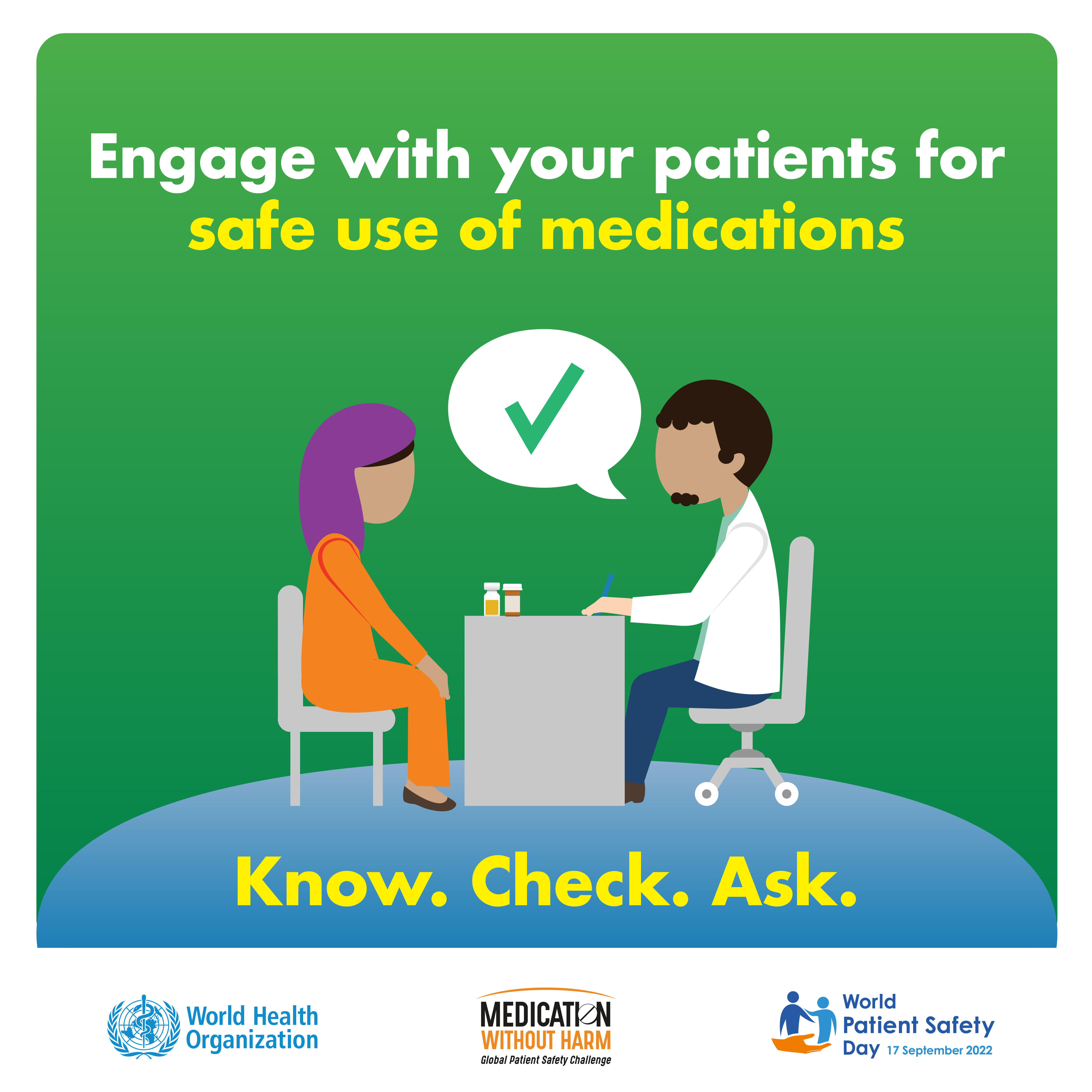Sano y Salvo | World Patient Safety Day: Medication Without Harm
Visit the original publication in the Sano y Salvo Blog
As every year since its proclamation for the first time in 2019 during the 72nd World Assembly of the World Health Organization (WHO), September 17 marks World Safety Day of the Patient with the aim of promoting measures aimed at reducing avoidable damage derived from health care.
Under the slogan "Medication without harm", World Patient Safety Day 2022 reaffirms and strengthens the objectives set out in 2017 within the third WHO World Challenge for Patient Safety. Despite the work and efforts made in recent years, problems related to the unsafe use of medication continue to be the main cause of preventable damage, accounting for more than 50% of all adverse events in all health systems in the world. world.
This year's campaign highlights the impact of the COVID-19 pandemic, which has significantly aggravated the risk of medication errors due to both the consequences of the interruption in the provision of health services, and the hardening of daily working conditions. professionals, often complex and adverse. Fatigue, poor environmental conditions, and staff shortages affect the safety of the medication administration process, potentially causing serious harm to the patient.
The objectives of this campaign are the following:
1. Raise global awareness of the high burden of medicine-related harm from medication errors and unsafe practices, and advocate for urgent action to improve medication safety.
2. Involve the main stakeholders and agents involved in efforts to prevent medication errors and reduce harm.
3. Empower patients and families to actively participate in the safe use of medications.
4. Expand the application of the third World Challenge for Patient Safety: "Medication without harm".

Taking into account the complexity involved in reducing medication-related harm, the WHO calls on all the agents involved —institutional leaders and policy makers, health system managers, health professionals, and patients, families and citizens in general— to prioritize and carry out actions aimed at its prevention. Actions that concern all professionals in the health field, particularly those in primary care, given their coordinating and integrating function of the different care needs of patients.
The role of primary care professionals is key in the three prioritized areas of action: polypharmacy, care transitions and high-risk situations, including the risks derived from the use of medications that are similar in physical appearance or whose name sounds Similary. Clinical review and medication reconciliation in care transitions; the consideration of the particularities of each patient in relation to the evolutionary moment of their disease and their social and work context, and the activities aimed at informing, educating and training patients so that they can participate in their safety, are actions carried out usually primary care professionals and that contribute to reducing the risks derived from the unsafe use of medication.
As reflected in the materials WHO has produced for the dissemination of the campaign, we all have a role to play in the safe use of medication. Through three simple recommendations —find out, check, ask— patients and professionals are urged to have the best possible information about the medication (both the characteristics of each medication and the set of medication that the patient is taking ), to carry out the necessary checks for safe use, as well as to investigate and try to clarify any doubts that may arise in relation to the medication.
In addition, the WHO stresses the need to continue working to guarantee the quality and safety of the medicines themselves. Measures such as an adequate denomination, labeling and packaging, which avoid confusion due to similarity in the name or in the external appearance -what is known as isoappearance- and reduce errors in its use. It also considers it necessary to work on the distribution and storage logistics process in such a way as to guarantee the availability of the necessary drugs and in good conditions for use, in order to obtain the correct product at the correct point of care.
As in previous years, the WHO is organizing a virtual event to commemorate this day, which will be held on September 15 from 2:00 p.m. to 5:30 p.m. (Central European Summer Time). Registration for the webinar is free and simultaneous translation into Spanish, among other languages, will be available. Also, to promote the dissemination of the campaign worldwide, it proposes that the 194 Member States illuminate workplaces, iconic monuments or better-known places in orange, to organize specific activities around September 17, and that share the initiatives developed.
In Spain, those responsible for the Patient Safety Strategy of the Ministry of Health and the Autonomous Communities, in collaboration with the Spanish Society for Healthcare Quality (SECA), have organized a scientific conference under the slogan "Safe use of medication", which will take place in person on Friday, September 16 at the Ministry of Health. It will present the 8 best practices implemented in the health centers of different Autonomous Communities to promote the safe use of medicines, both in primary care and in the hospital setting.
To facilitate the dissemination on social networks of the contents and activities carried out around the day, the hashtag proposed by the WHO is #WorldPatientSafetyDay
In Spanish-speaking countries, the hashtag #WorldPatientSafetyDay will be used.
Astier Peña MP, Añel Rodríguez RM. September 17, World Patient Safety Day: medication without harm. [Internet]. Safe and sound. Patient safety blog in primary care. [September 14, 2022; accessed 14 September 2022]. Available at: https://sano-y-salvo.blogspot.com/2022/09/17-de-septiembre-dia-mundial-de-la.html